CBMSE Green Laboratory Guidelines
advertisement
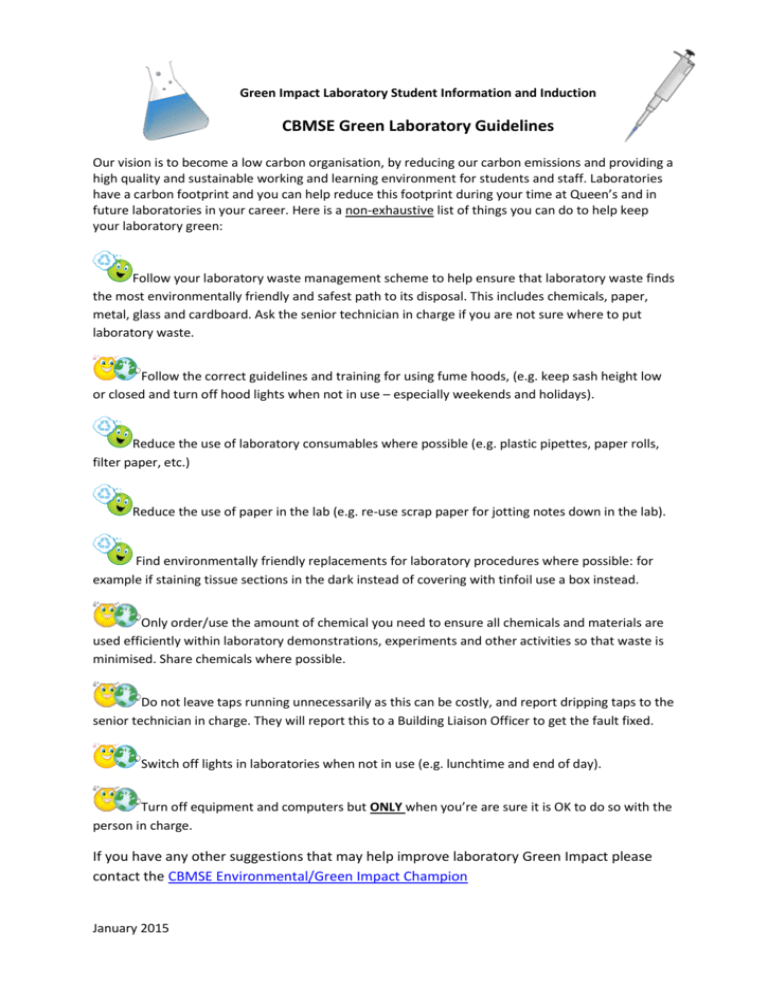
Green Impact Laboratory Student Information and Induction CBMSE Green Laboratory Guidelines Our vision is to become a low carbon organisation, by reducing our carbon emissions and providing a high quality and sustainable working and learning environment for students and staff. Laboratories have a carbon footprint and you can help reduce this footprint during your time at Queen’s and in future laboratories in your career. Here is a non-exhaustive list of things you can do to help keep your laboratory green: Follow your laboratory waste management scheme to help ensure that laboratory waste finds the most environmentally friendly and safest path to its disposal. This includes chemicals, paper, metal, glass and cardboard. Ask the senior technician in charge if you are not sure where to put laboratory waste. Follow the correct guidelines and training for using fume hoods, (e.g. keep sash height low or closed and turn off hood lights when not in use – especially weekends and holidays). Reduce the use of laboratory consumables where possible (e.g. plastic pipettes, paper rolls, filter paper, etc.) Reduce the use of paper in the lab (e.g. re-use scrap paper for jotting notes down in the lab). Find environmentally friendly replacements for laboratory procedures where possible: for example if staining tissue sections in the dark instead of covering with tinfoil use a box instead. Only order/use the amount of chemical you need to ensure all chemicals and materials are used efficiently within laboratory demonstrations, experiments and other activities so that waste is minimised. Share chemicals where possible. Do not leave taps running unnecessarily as this can be costly, and report dripping taps to the senior technician in charge. They will report this to a Building Liaison Officer to get the fault fixed. Switch off lights in laboratories when not in use (e.g. lunchtime and end of day). Turn off equipment and computers but ONLY when you’re are sure it is OK to do so with the person in charge. If you have any other suggestions that may help improve laboratory Green Impact please contact the CBMSE Environmental/Green Impact Champion January 2015

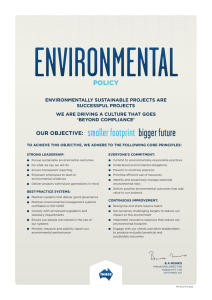
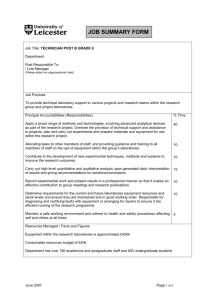
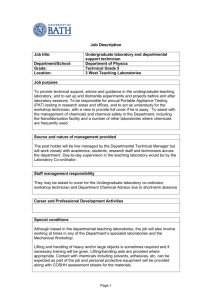

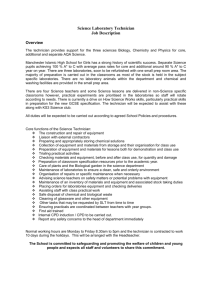
![Grade 5 Teaching Technician [DOC 61.50KB]](http://s2.studylib.net/store/data/014979097_1-3751755ab803ff95c2480ce789489cca-300x300.png)

![Grade 6 Teaching Technician [DOC 58.50KB]](http://s2.studylib.net/store/data/014979098_1-a4c60784d358c697baa56281e47b8c4c-300x300.png)


